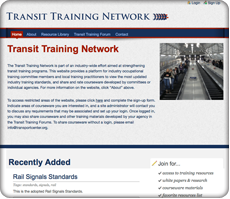News
Building a More Powerful Working People’s Movement for Racial, Social, and Economic Justice
Posted September 2020
Labor Day 2020 closely follows the 57th Anniversary of the August 28 March on Washington where Martin Luther King, Jr. delivered his famous “I Have a Dream” speech.
In this issue of the Weekly Update, the Center is posting an excerpt of a remarkable and beautiful statement from veterans of that original March . They are explicitly passing the torch to a new generation noting that the 1963 march encouraged a new generation of younger activists who, against tremendous resistance, sat in at lunch counters, organized the Freedom Rides and brought the struggle for racial justice into the streets.
While most Americans now have a warm and positive feeling about the civil rights movement of the 1950s and 1960s, the movement provoked violent resistance and great controversy in its own time. Dr. King never tired of pointing out that the purpose of non-violent resistance was to provoke conflict and force change. His “ Letter from a Birmingham Jail ” admonished those sympathetic to the movement’s goals to cease counseling patience in the face of injustice. John Lewis, the youngest speaker at that 1963 March, was even more insistent on acting militantly in what King called “the fierce urgency of now.”
Veterans of the 1963 March and recent historians stress that the civil rights movement’s demands went far beyond ending the legal regime of Jim Crow. The 1963 March officially proclaimed that its demands were for “Jobs and Freedom.” Legendary labor leader A. Philip Randolph served as Grand Marshall of the march, and the march built on the legacy of his 1941 March on Washington Movement, which forced FDR to create the Fair Employment Practices Commission banning racial discrimination in wartime industries, industries that made up almost the entire economy at the time. Randolph, King, Bayard Rustin, (chief organizer, along with Randolph, for the 1963 March), and other leaders all saw the need for the fundamental reordering of the United States calling for a full employment economy with opportunity for all. The veterans of the 1963 March have drawn the parallel clearly between 1963 and today:
We cannot forget that the March on Washington was for jobs as well as freedom.
Fifty-seven years ago, we marched to demand a national program of public works,
including job training, for the unemployed. Today, when our society suffers from the
most severe economic insecurity and mass unemployment since the Great Depression,
we renew our demand.
With demands like that, the organizers of the 1963 March saw themselves as natural allies of the labor movement. The official labor movement did not always embrace the alliance. In 1963, the AFL-CIO refused to endorse the march; leaders openly discussed fears that the march would end up as a riot. Many constituent union leaders and members, including delegations from the transit unions, nevertheless supported and participated in the march.
In 2020, the AFL-CIO enthusiastically embraced the march. Secretary-Treasurer Liz Shuler opened her statement at the march by saying that “Black Lives Matter,” officially aligning the AFL-CIO with the protest movement, and promising that the federation would work to “end racism in our economy, our politics, our workplaces AND our union halls.” She cited the lack of justice for Black Americans shot by police and made a special mention of two Black trans women who were murdered earlier this summer.
It is important to note that in the initial upsurge of protests, transportation unions expressed their support for the movement for racial justice. Grassroots leaders of transit unions stood in solidarity with Black Lives Matters protesters, refusing to use their buses to transport either the police or those the police detained.
The labor movement in 1963 wielded much greater power than it does now in collective bargaining, in the halls of Congress, and at the ballot box. Regaining some of that power needs be a priority for unions. For all the many losses the labor union movement has suffered over these decades, the solidarity with the Black Lives Matter movement offers real hope for building a more powerful, multi-racial working people’s movement for racial, social, and economic justice.

